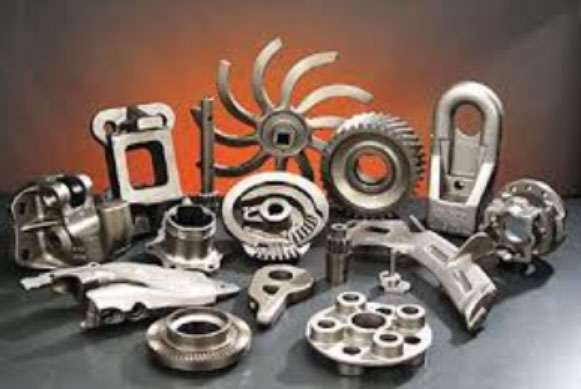Ductile iron casting, also known as nodular iron casting or spheroidal graphite iron casting, offers sustainable and cost-effective solutions for manufacturing processes. Let’s explore how ductile iron casting contributes to sustainability and cost-effectiveness in manufacturing:

Sustainability:
- Recyclability: Ductile iron casting is a highly recyclable material. Scrap and excess material generated during the casting process can be easily collected, melted down, and reused to produce new components. This recycling capability reduces the demand for virgin materials, conserves natural resources, and minimizes waste generation.
- Energy Efficiency: Ductile iron casting processes, such as sand casting or precision casting, can be energy-efficient compared to other manufacturing methods. The process typically involves melting and casting iron, which can be optimized for energy consumption. Energy-efficient practices, such as using energy-efficient furnaces or optimizing the casting process parameters, can further reduce energy consumption and minimize the environmental impact.
- Longevity and Durability: Ductile iron casting offers excellent longevity and durability. Components made from ductile iron have a long service life, reducing the need for frequent replacements. This reduces material consumption, waste generation, and the overall environmental impact associated with manufacturing and disposal of components.
- Corrosion Resistance: Ductile iron casting exhibits good corrosion resistance, especially when compared to materials like steel. This property extends the lifespan of components, reduces the need for corrosion protection measures, and decreases the environmental impact associated with maintenance and repair activities.
Cost-Effectiveness:
- Material Cost: Ductile iron is relatively cost-effective compared to other materials used in manufacturing. It provides a favorable balance between performance, strength, and cost, making it an economical choice for many applications. The availability of iron ore and the efficiency of ductile iron production processes contribute to its cost competitiveness.
- Design Flexibility: Ductile iron casting offers design flexibility, allowing for the production of complex shapes and intricate components. This eliminates the need for additional fabrication steps and reduces the overall manufacturing cost. Engineers can optimize designs to minimize material usage, streamline production processes, and achieve cost-effective manufacturing solutions.
- Production Efficiency: Ductile iron casting processes, such as sand casting or investment casting, can be highly efficient and cost-effective. The ability to produce components in large volumes and the repeatability of the casting process contribute to efficient manufacturing. Additionally, advancements in casting technologies and process optimization techniques further enhance production efficiency and reduce manufacturing costs.
- Low Maintenance Requirements: Ductile iron components often require minimal maintenance due to their durability and resistance to wear and corrosion. This reduces maintenance costs, downtime, and the need for frequent component replacements, resulting in long-term cost savings for manufacturers.
Ductile iron casting provides sustainable and cost-effective solutions for manufacturing processes. Its recyclability, energy efficiency, longevity, and durability contribute to sustainability, while its material cost, design flexibility, production efficiency, and low maintenance requirements make it a cost-effective choice for manufacturers. By incorporating ductile iron casting into their manufacturing strategies, companies can achieve both environmental sustainability and economic benefits.
